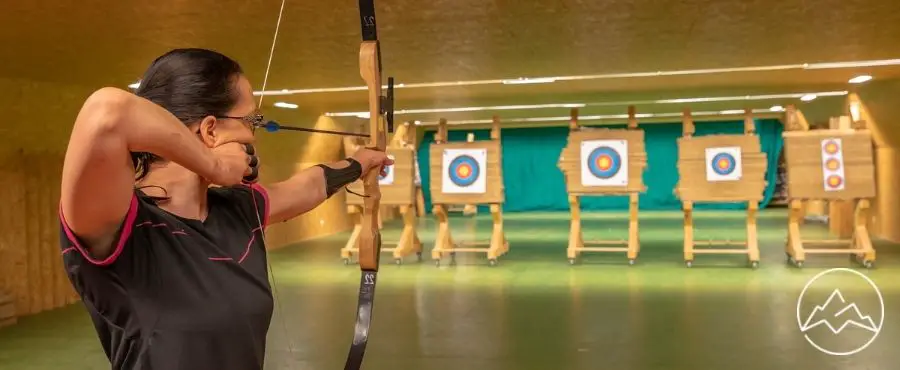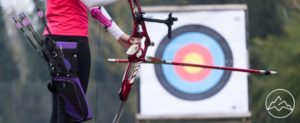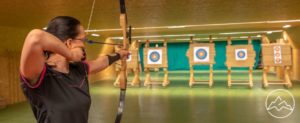In the world of archery, the evolution of bow types has been a fascinating journey from the traditional to the modern. Like a tapestry woven with ancient threads, the history of bows stretches back through time, reflecting the ingenuity and adaptability of humankind. Today, there are four major types of bows: traditional/longbows, recurve bows, compound bows, and crossbows. Each type has its own unique characteristics, offering a range of options for archers of all levels of experience.
Traditional bows, with their simple design and primal allure, harken back to the origins of archery. Made from wood and strung with a string, these bows have stood the test of time and continue to captivate enthusiasts. Recurve bows, on the other hand, add a touch of modernity to tradition with their curved limbs, providing forgiveness and increased speed. They can also be customized with sights and accessories, allowing for a personalized shooting experience.
In contrast, compound bows represent the pinnacle of modern technology in archery. These bows boast multiple moving parts, enabling high poundage while holding very little weight due to the let-off in the valley. The result is accuracy, speed, and ease of use, albeit with the need for more maintenance and a higher price tag. Finally, crossbows, although technically a type of bow, offer a different shooting experience altogether. Mounted horizontally on a stock and shot using a trigger, crossbows provide power and accuracy, albeit at the cost of increased complexity and bulkiness.
Choosing the best bow for beginners depends on a variety of factors, including experience, comfort level, shooting style, budget, and intended use. Fortunately, each type of bow offers beginner-friendly models, ensuring that aspiring archers can embark on their archery journey with confidence. It is also important to consider local range rules and budget constraints when selecting a bow, as these factors can greatly impact the overall shooting experience.
In this article, we will delve into the evolution of bow types, exploring the unique characteristics and advantages of each. By gaining a deeper understanding of the different bows available, beginners and seasoned archers alike can make informed decisions that align with their individual preferences and goals. So, let us embark on a journey through time and technology, as we trace the evolution of bow types from traditional to modern, uncovering the wonders that lie within each bow’s string.
Key Takeaways
- Archery is one of the oldest practices and sports in the world, with four major types of bows.
- The four major types of bows are traditional/longbows, recurve bows, compound bows, and crossbows.
- Each type of bow has its own unique features and equipment, and functions through the same basic concept of flexing limbs to propel an arrow.
- The best bow for beginners depends on factors such as experience, comfort level, style, budget, and intended use.
Traditional Bows
Traditional bows, also known as longbows, are the oldest and most basic type of bows, typically made from wood with a string, and have specific draw weights at specific lengths. The evolution of traditional bows can be traced back thousands of years, as they were initially used by ancient civilizations for hunting and warfare. Over time, advancements in materials and construction techniques have allowed for the production of more durable and efficient longbows. Despite their simplicity, traditional bows offer several advantages. They provide a more traditional and authentic archery experience, requiring greater skill and technique to shoot accurately. Additionally, traditional bows are often more affordable compared to modern bows, making them an accessible option for beginners or archers who prefer a more traditional challenge.
Recurve Bows
Recurve bows, characterized by their curved limbs, offer increased speed and power compared to longbows. These bows differ from traditional bows in their design, which includes the curved limbs that store more energy when the bow is drawn. This design allows for a more efficient transfer of energy to the arrow, resulting in higher arrow speeds. Additionally, recurve bows are popular in archery competitions due to their advantages. They offer forgiveness and greater speeds with lighter draw weights, making them easier to shoot accurately. Recurve bows also allow for the use of sights and accessories, enhancing the archer’s precision. Their versatility and performance make them a popular choice among archers in various skill levels and competitive settings.
Compound Bows
Compound bows, a result of technological advancements in archery, are known for their intricate design and multiple moving parts that contribute to their accuracy, speed, and ease of use. The main components of a compound bow include the riser, cams, limbs, and string/cable assembly. One of the key advantages of compound bows is their accuracy. The let-off in the valley allows archers to hold less weight when fully drawn, resulting in increased stability and improved aim. This feature makes compound bows particularly beneficial for hunters and competitive archers who require consistent and precise shots. Additionally, compound bows offer greater arrow speed compared to other types of bows. The combination of the pulley system and the cam design allows for a high draw weight while minimizing the effort required to hold the bow at full draw. This results in faster arrow velocities and increased kinetic energy, which is advantageous for long-range shooting or when hunting large game.
Frequently Asked Questions
What are the advantages and disadvantages of using a crossbow compared to other types of bows?
Crossbows offer several advantages over other types of bows. They have higher draw weights, resulting in greater power and accuracy. They also have a locking device and trigger, making them easier to shoot. However, there are some disadvantages to using crossbows. They can be bulkier and more difficult to maneuver compared to traditional bows. Additionally, safety considerations and regulations should be followed when using compound bows, such as checking local range rules.
Are there any specific safety considerations or regulations when using a compound bow?
Safety regulations and proper usage are important considerations when using a compound bow. It is crucial to familiarize oneself with local laws and regulations regarding archery and bow usage. Additionally, proper safety gear, such as arm guards and finger tabs, should be worn to prevent accidents and injuries. Adequate training and practice are essential to ensure proper technique and handling of the compound bow, as it has multiple moving parts and requires careful maintenance. Following safety guidelines and practicing responsible archery can help ensure a safe and enjoyable experience with a compound bow.
Can traditional bows or longbows be used in modern archery competitions, or are they mainly used for historical reenactments?
Traditional bows and longbows can be used in both modern archery competitions and historical reenactments. While these types of bows have a more traditional and historical appeal, they are not limited to reenactments. Many archers choose to use traditional bows and longbows in modern competitions as well. These bows require a high level of skill and technique to master, and some archers prefer the challenge and simplicity that they offer. Additionally, traditional bows and longbows have their own unique style and equipment that appeals to certain archers.
How does the draw weight and let-off of a compound bow affect the shooting experience?
The draw weight and let-off of a compound bow significantly impact the shooting experience. Draw weight refers to the amount of force required to pull back the bowstring, while let-off is the reduction in weight felt at full draw. A higher draw weight allows for more power and accuracy, but can be difficult to hold for extended periods. Let-off allows archers to hold the bow at full draw with minimal effort, enhancing accuracy and consistency. However, proper form and technique are crucial to fully utilize the advantages of draw weight and let-off.
Are there any specific techniques or training methods that are recommended for beginners using recurve bows?
When it comes to beginner training methods for using recurve bows, there are several techniques that are recommended. Firstly, proper stance and posture are crucial for stability and accuracy. Beginners should also focus on consistent anchor points and grip to ensure consistent shots. Additionally, learning proper drawing and release techniques, as well as practicing with a clicker, can help improve consistency and precision. Finally, regular practice, patience, and seeking guidance from experienced archers can greatly assist beginners in mastering the use of recurve bows.
Conclusion
In conclusion, the evolution of bow types from traditional to modern has been a remarkable journey. From the simplicity and historical significance of traditional bows to the forgiveness and speed offered by recurve bows, and the accuracy and power of compound bows and crossbows, each type has its own unique qualities. Beginners must consider their experience, comfort level, style, budget, and intended use when choosing the best bow. The world of archery offers a wide range of options, ensuring that there is a perfect bow for everyone.










